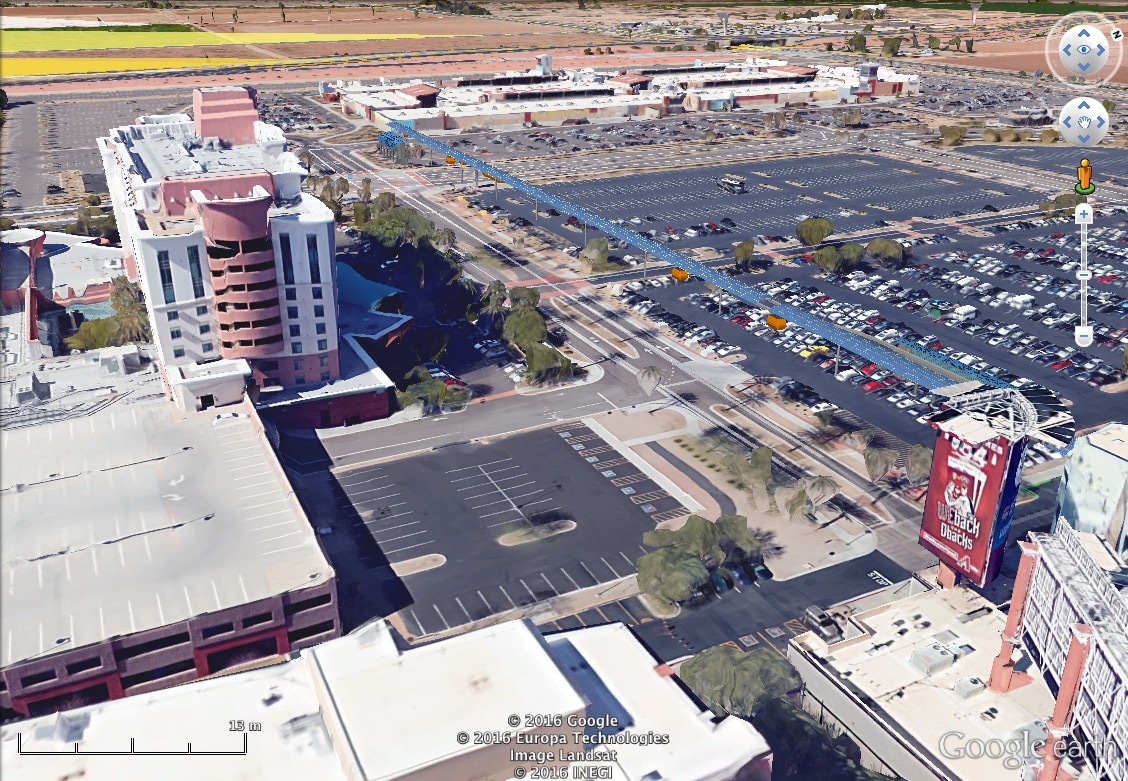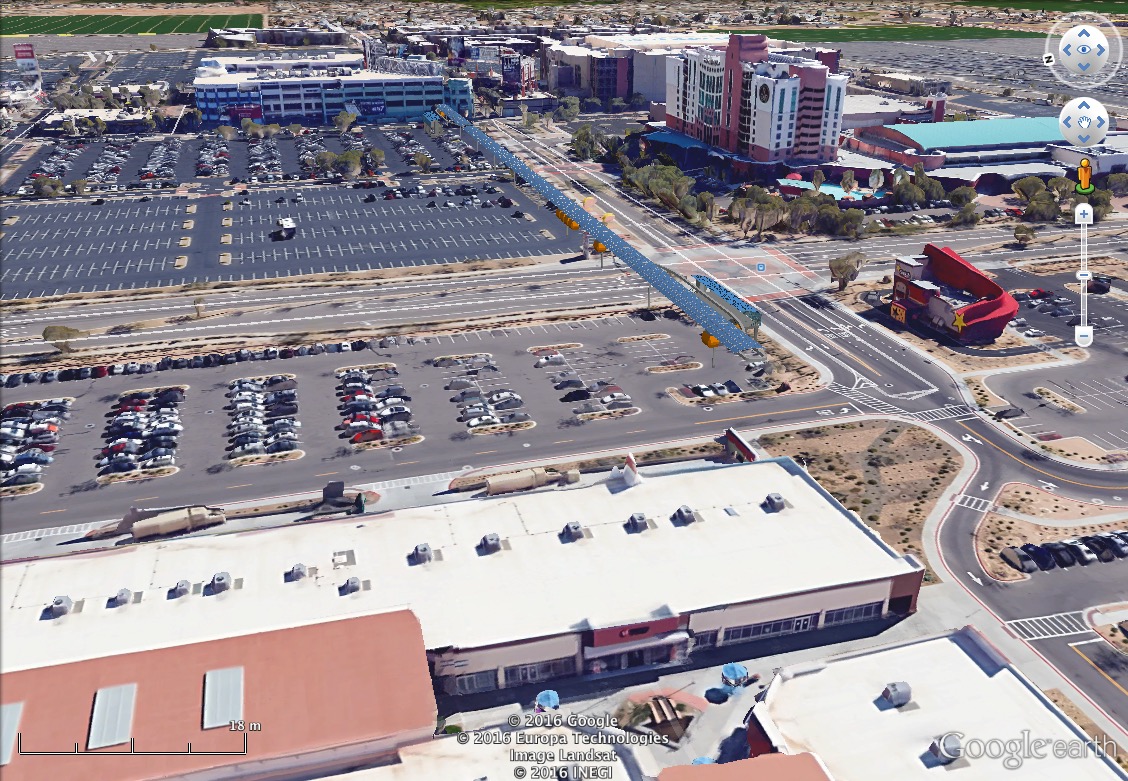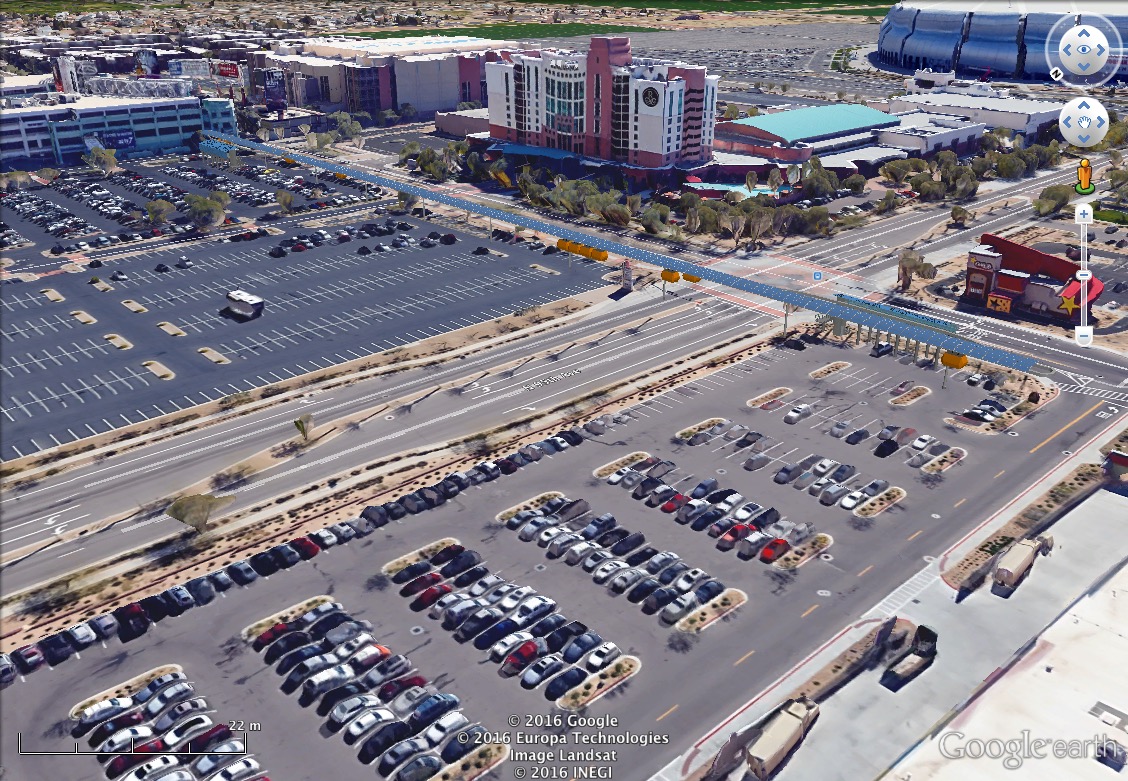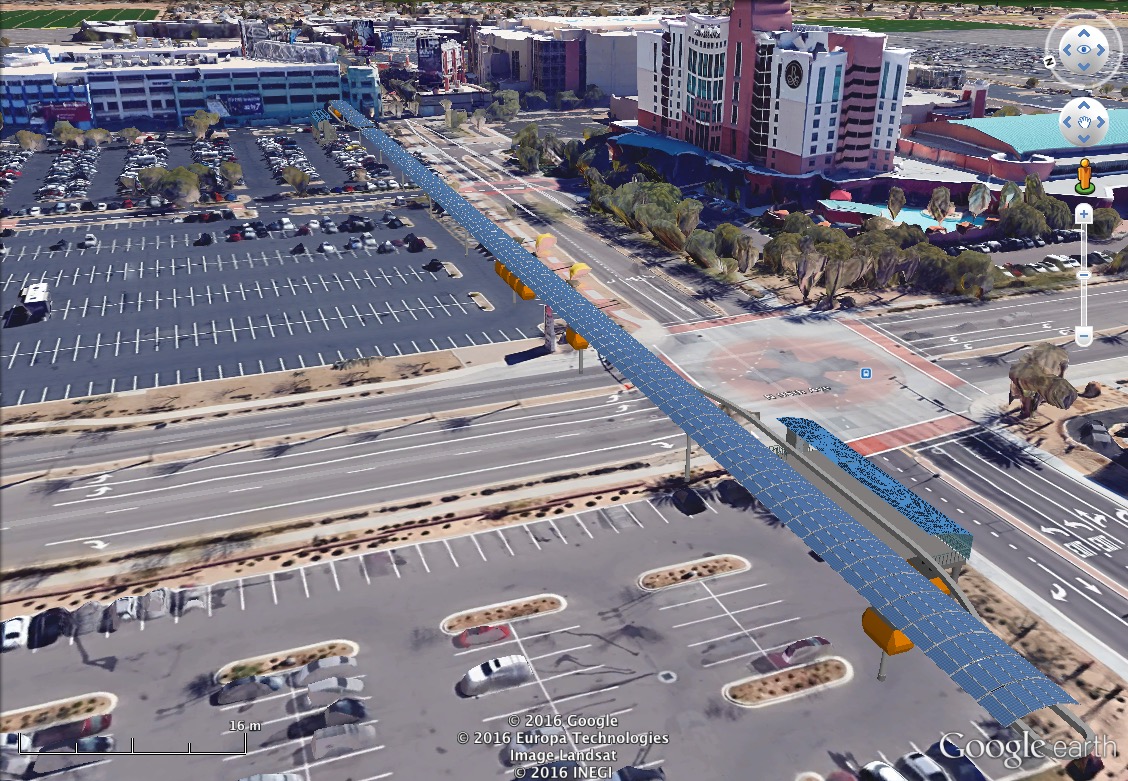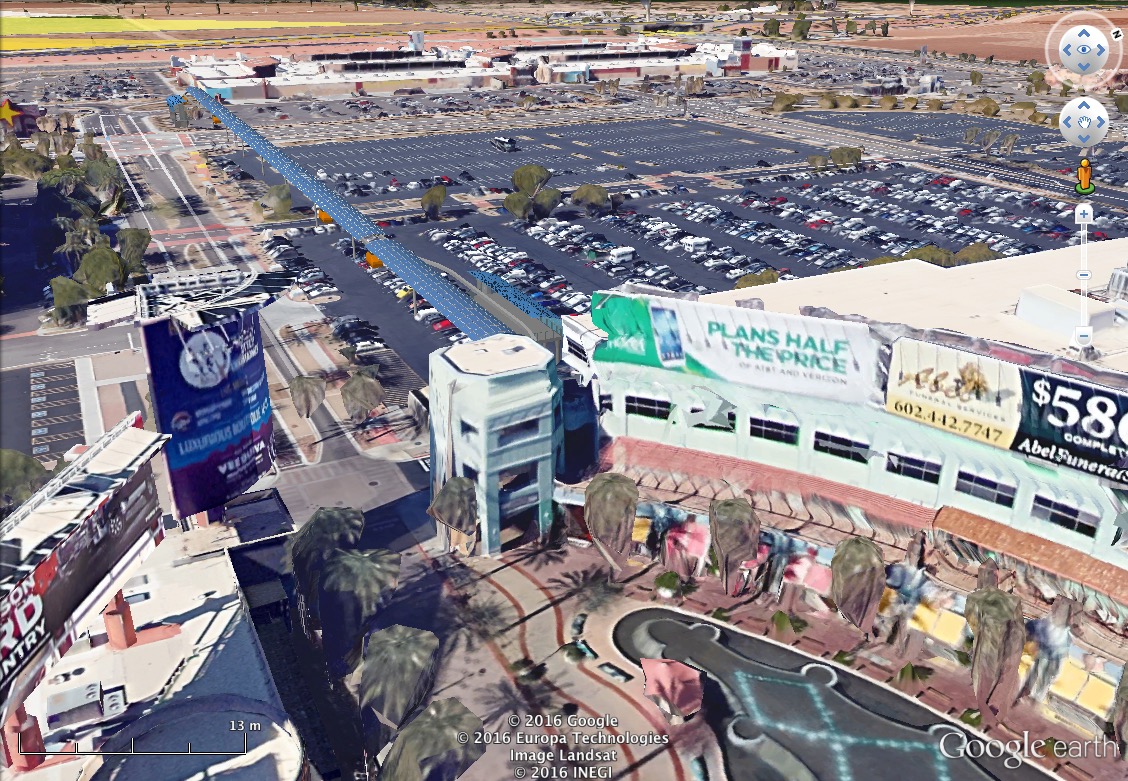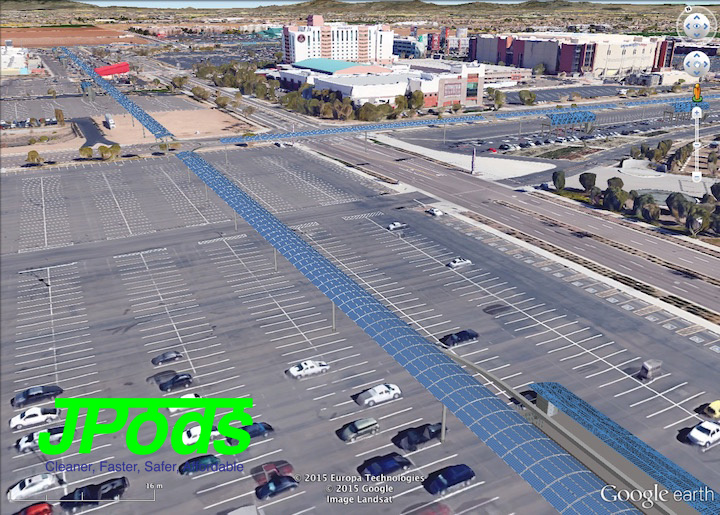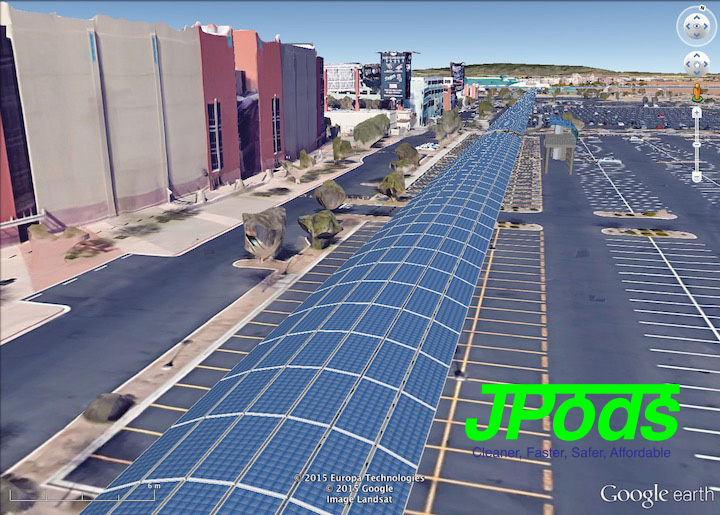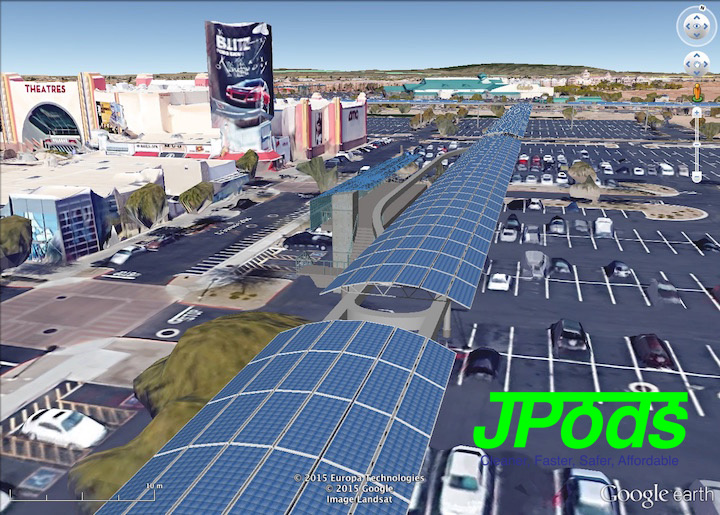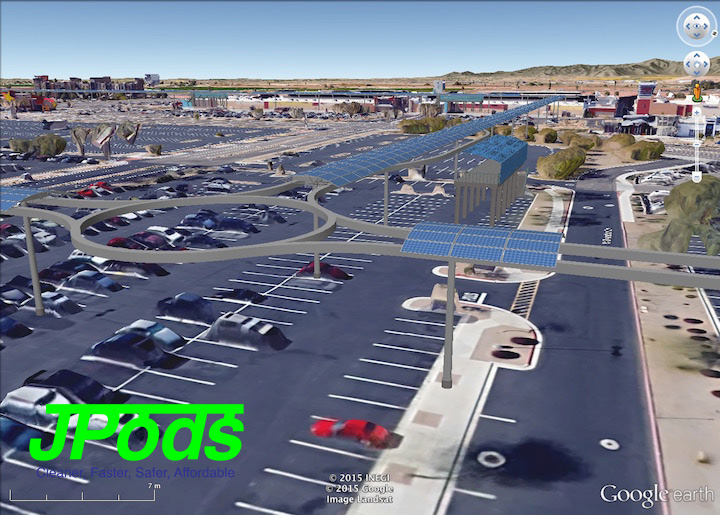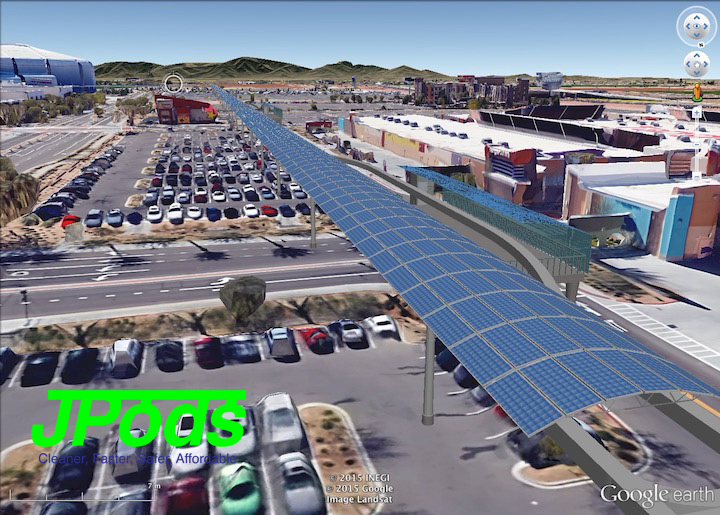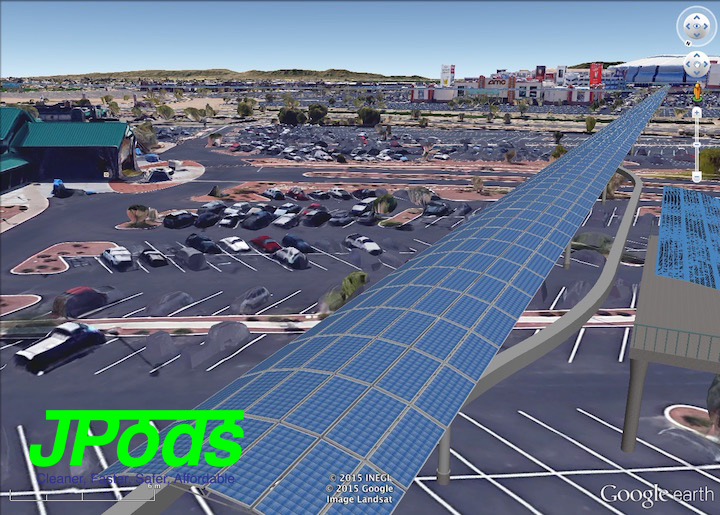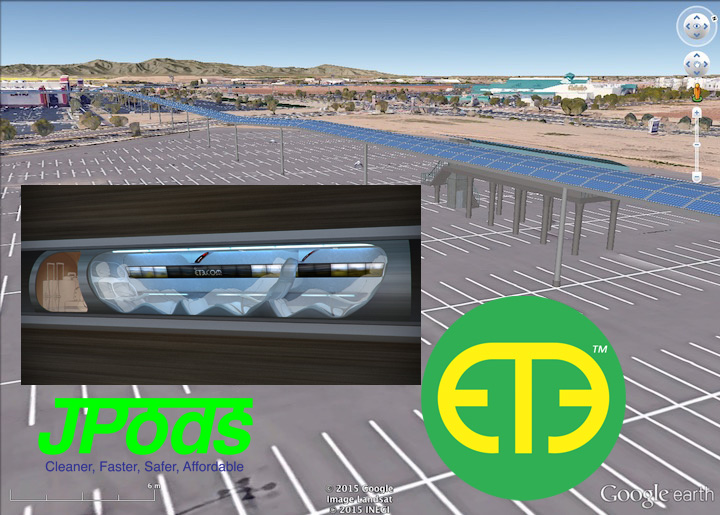Phoenix
- 10x Benefits
- Cost of Traffic in Arizona is about $18.8 billion per year. About $9 billion per year can be earned as value and customer savings:
- Fuel: $10.7 billion
- Accidents: $6.1 billion
- Congestion: $2.0 billion
- Video of what JPods will look like as we building China and India this year.
- Performance Standard Law is required to raise capital and Franchise Ordinance. Legal barriers to self-driving cars are being removed. We need to remove the barriers to cleaner, faster, safer, and more affordable mobility networks. Kiva systems is applying the concepts in warehouses. Current DOT policies caused the loss of 120,000 miles of freight railroads despite efficiencies of 476 ton-miles per gallon.
- Build with private capital.
- Operate without government subsidies.
- Exceed 5x the efficiency of highways.
- Exceed the safety of highways.
- Pay 5% of gross revenues to the Rights of Way holders.
- Regulate by the ASTM F24 Theme park standards:
- Existing written enforcement and industry.
- Existing insurance industry.
- Existing common law.
- Safety record thousands of times better than DOTs with a specific focus on safety of pedestrians, especially children.
- Build on the success of the Morgantown PRT network and the independent audit showing a payback every 5 years. Morgantown’s PRT is self-regulated, so it does not provide a repeatable model for deploying new networks.
- Kitty Hawk Networks are starter networks to train crews and localize manufacturing. JPods can build Kitty Hawk Networks in the US and ship them to China and India, or put factories in China and India to ship to the US. Print Quality Kitty Hawk and Email Quality Kitty Hawk.
- How stations work.
- Capacity of the networks are 20 times that of light rail. No one waits more than two minutes, even when there is a sudden large group, such as a train unloading.
- Costs of the networks are 1/10th the cost of light rail.
- Energy savings, converting current costs of 59.2 cents per mile to operate a car into 55.2 cents per mile of profits and customer savings. JPods cost 4 cents per vehicle-mile to operate. Profit is the difference between the value customers willingly pay minus the cost to compete. JPods increases the value by solving congestion and reduces costs by solving pollution. JPods converts costs to value by removing the Parasitic Mass of the vehicle and the energy costs of repetitive start-stops in traffic (Parasitic Energy Ratio).
- Prime Law of Networks. JPods provides dense network conductivity in highly repetitive urban transport of people and cargo. ET3 provides high-speed connections between communities.
- Paper illustrating emptying a stadium.
- Life requires energy. Cheap oil is finite. Life powered by cheap oil is terminal. Article on Peak Fracking is slowly accumulating 1.4 times the harm of the 1973 Oil Embargo.
- Background of flood control and disaster relief. Talking Points with the Deputy Commanding General, US Army Corps of Engineers.
The following are Route-Time™ maps of travel times in Phoenix with JPods. 24 hours a day, 7 days a week. From the Red Cross (upper left) you walk to the nearby station, ride to another station and walk from that station. Where you can walk, ride, walk in 5 minutes is Green, 10 minutes is Blue, 20 minutes is Yellow, and 30 minutes is Red.

Red Cross is by the airport.
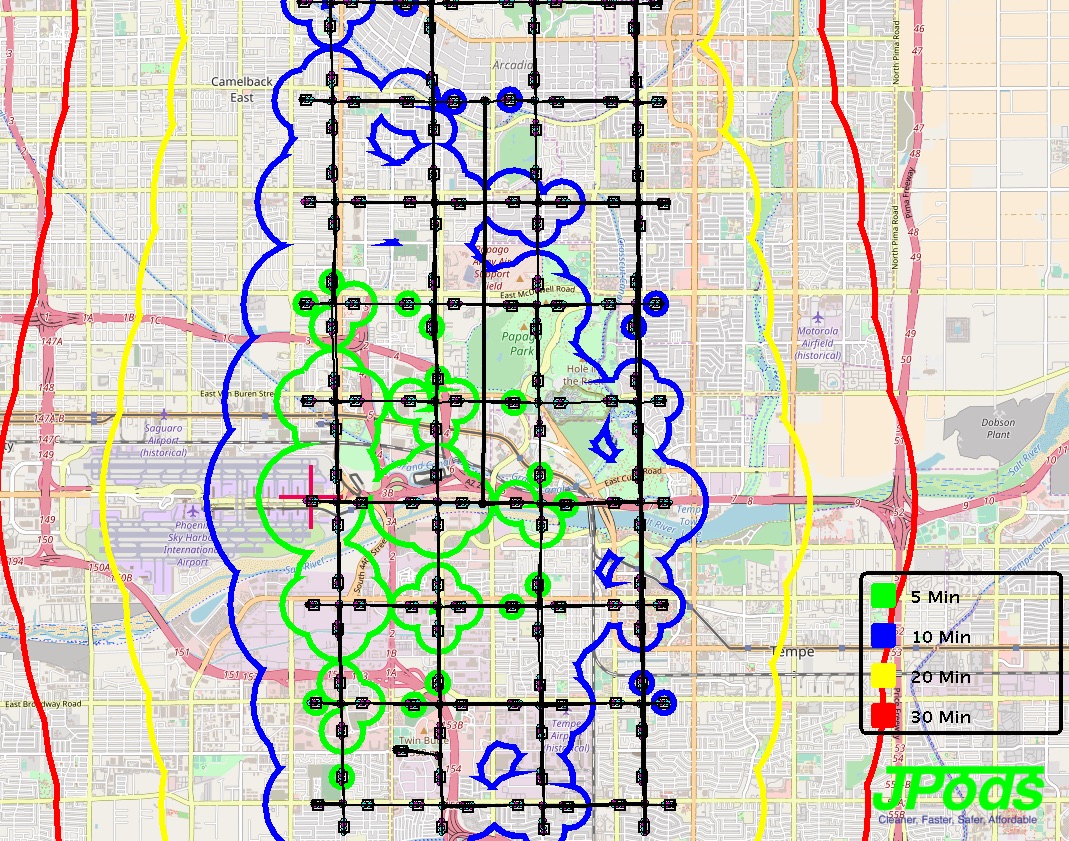
Red Cross is south of the airport.
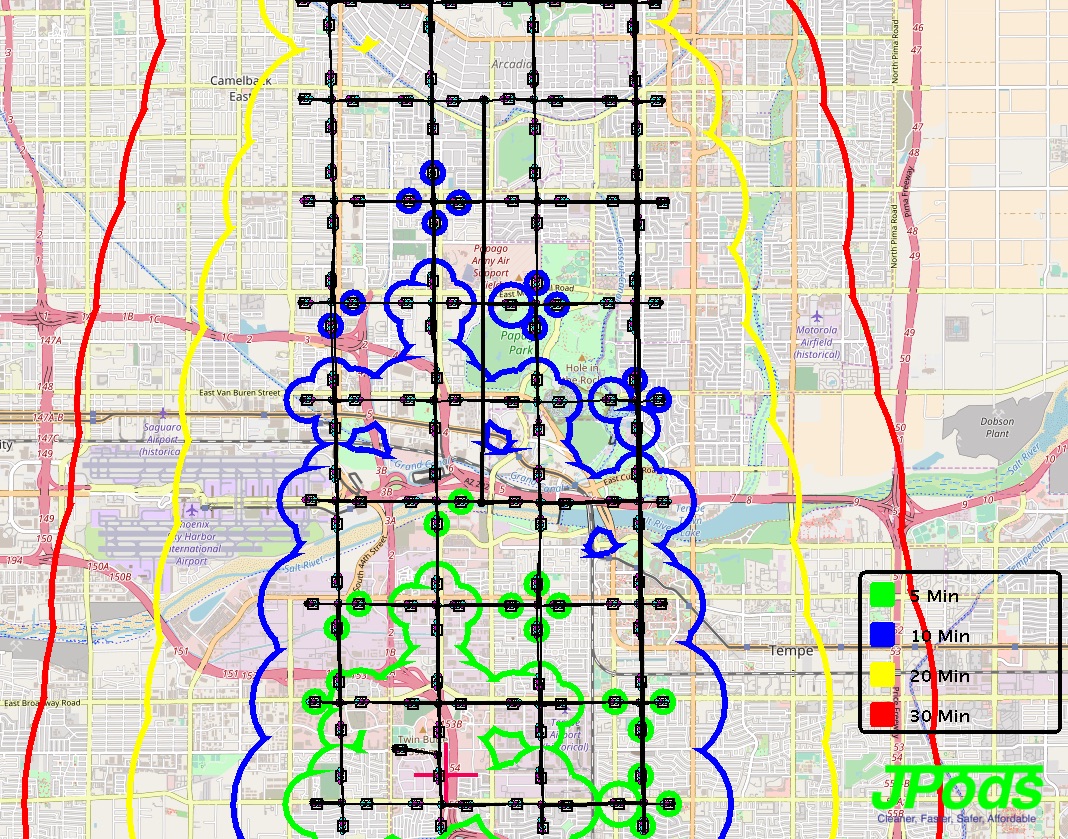


Illustrated a network in the souther section of District 6.
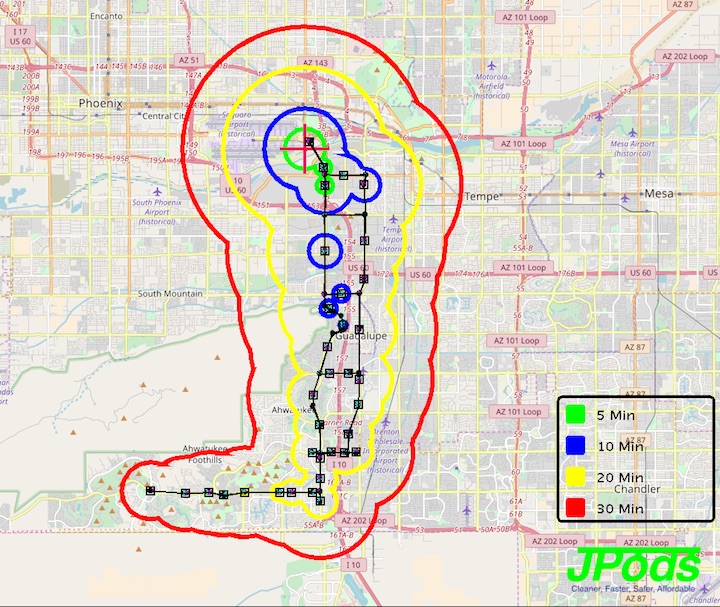

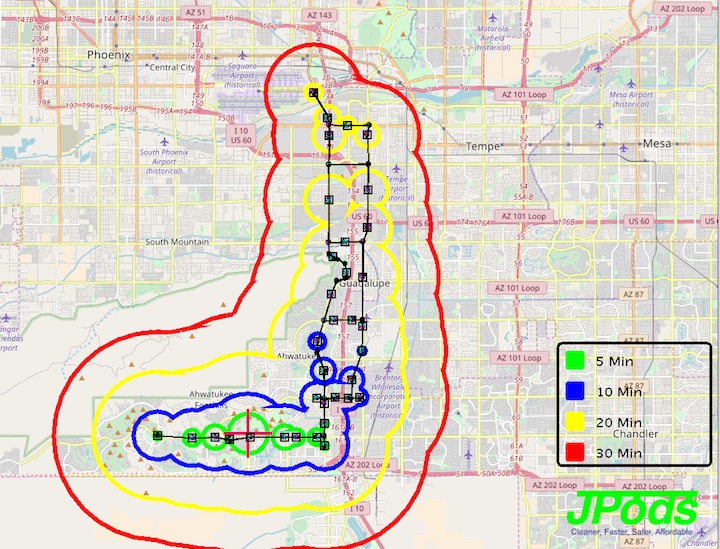
90 Second Massachusetts JPods from Bill James on Vimeo.
